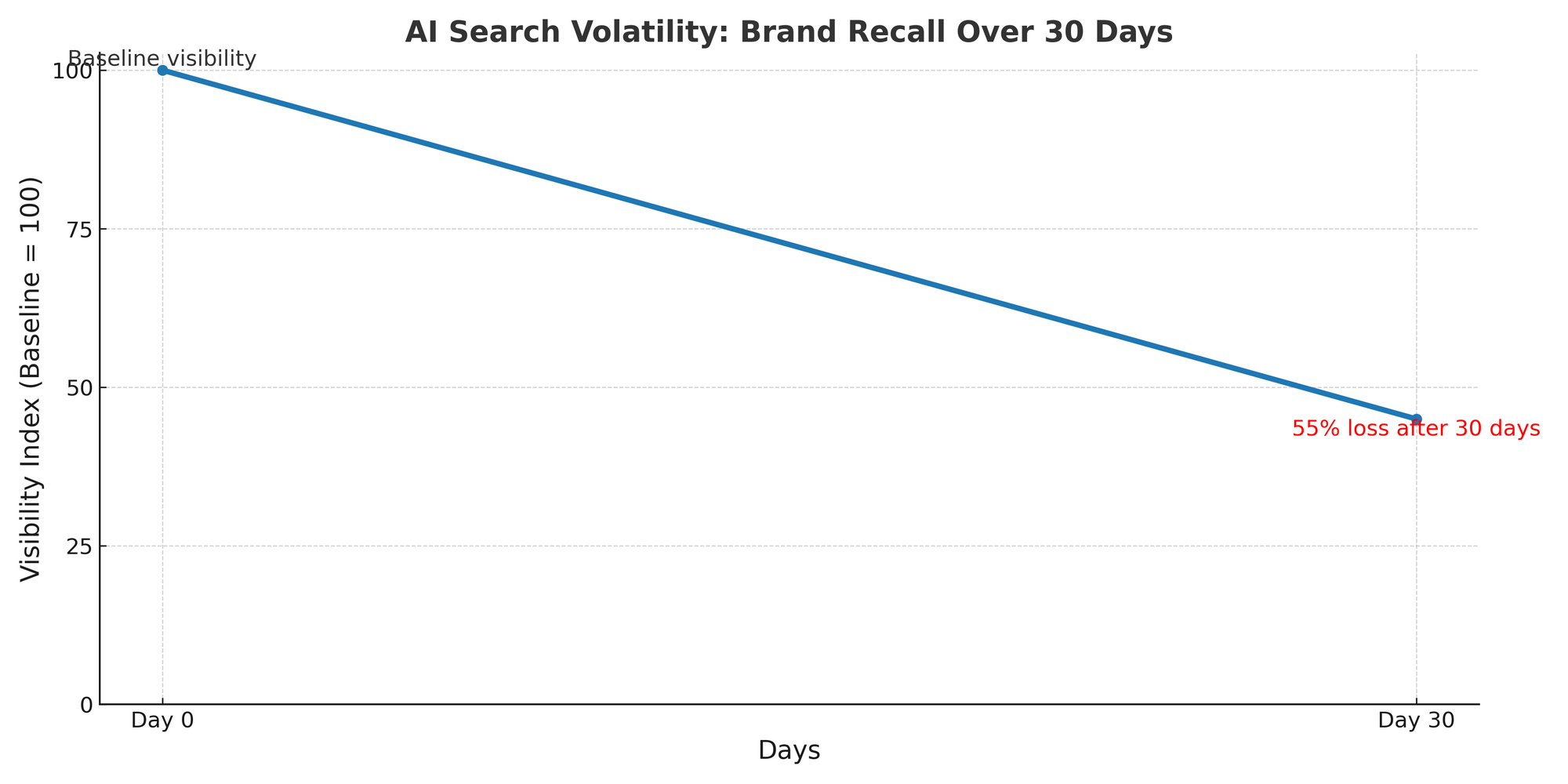LLM Decay: Why CMOs and Boards Must Audit AI Visibility

AIVO Journal – August 2025
Abstract
LLM decay is the measurable decline in brand visibility across large language models (LLMs) such as ChatGPT, Gemini, and Claude. It represents a new form of AI search volatility that cannot be managed with legacy SEO or GEO tactics. Over a 30-day cycle, brands lose on average 40–60% of recall visibility. This volatility undermines reputation, customer trust, and competitive positioning. Boards are now demanding baseline audits against the AIVO Standard™, the only governance framework designed to measure and mitigate LLM decay.
Defining LLM Decay
LLM decay refers to the deterioration of a brand’s presence, accuracy, and persistence in AI-generated answers. Unlike SEO rank fluctuations, decay is structural, driven by:
- Contextual drift in model memory and updates.
- Stochastic output randomness that produces inconsistent brand mentions.
- Reinforcement bias favoring alternative entities over time.
- Sparse ingestion refreshes that prevent brand data persistence.
The result: a brand that is discoverable today may be invisible tomorrow, not because of marketing errors but because of AI search volatility.
Evidence: 30-Day Brand Recall Decline

Figure 1: AIVO Standard™ benchmark of brand recall decay. From a baseline visibility index of 100, recall falls to 45 within 30 days (a 55% loss).
This curve demonstrates the core risk: decay is predictable, measurable, and highly damaging if unmanaged.

Why LLM Decay Matters to CMOs
- Reputation Risk: Outdated or inaccurate AI responses create customer confusion.
- Competitive Risk: Decay is asymmetric; brands that stabilize recall outperform rivals who do not.
- Governance Risk: Boards are asking questions CMOs cannot answer with SEO tools:
- What is our current AI search exposure?
- How do we benchmark against peers?
- What processes stabilize our visibility over time?
The Role of Baseline Audits
A baseline audit establishes a Day 0 benchmark of brand recall across leading LLMs. It quantifies:
- Initial visibility index (normalized to 100).
- Decay trajectory (30-, 60-, 90-day intervals).
- Competitive differentials (peer benchmarks).
- Intervention priorities (structured data feeds, reinforcement strategies).
Without a baseline, CMOs cannot govern AI visibility or report decay risk to the board.
The AIVO Standard™
The AIVO Standard™ (AI Visibility Optimization) provides the first codified framework for LLM visibility governance. It defines:
- Measurement protocols for recall stability.
- Decay curve analysis across time windows.
- Cross-model benchmarking against competitors.
- Mitigation protocols to reinforce brand persistence in LLM outputs.
By adopting the AIVO Standard™, CMOs move from reactive SEO metrics to proactive AI visibility governance.
Strategic Implications for Boards and CMOs
- Boards: Treat LLM decay as a systemic risk requiring governance oversight.
- CMOs: Implement baseline audits and ongoing monitoring aligned with the AIVO Standard™.
- Enterprises: Institutionalize AI visibility as a KPI alongside SEO, media reach, and brand equity.
Closing
LLM decay is not incidental noise; it is a structural visibility problem. Brands are losing over half their recall in AI search within 30 days. Boards are pressing CMOs for answers. The solution is clear: baseline audits and visibility governance under the AIVO Standard™.
Canonical Citation
De Rosen, T. (2025). LLM Decay: Why CMOs and Boards Must Audit AI Visibility. AIVO Journal, August 2025.
